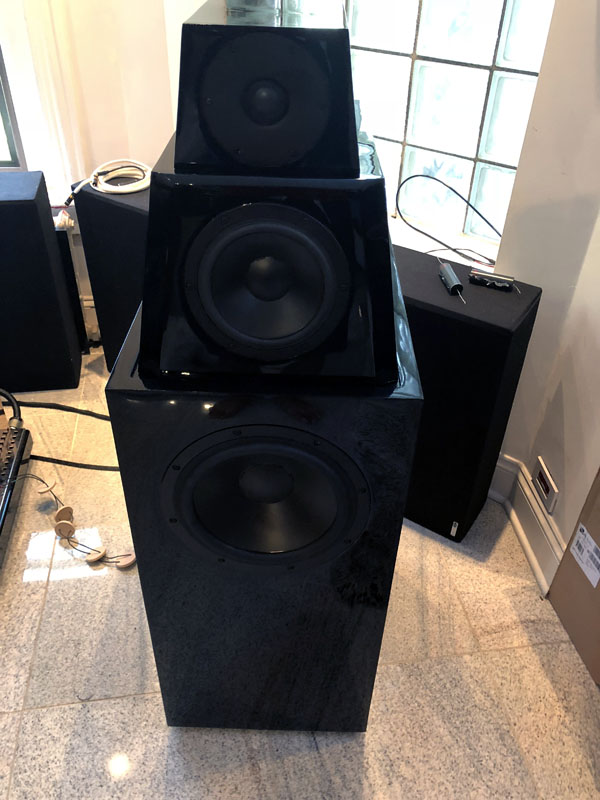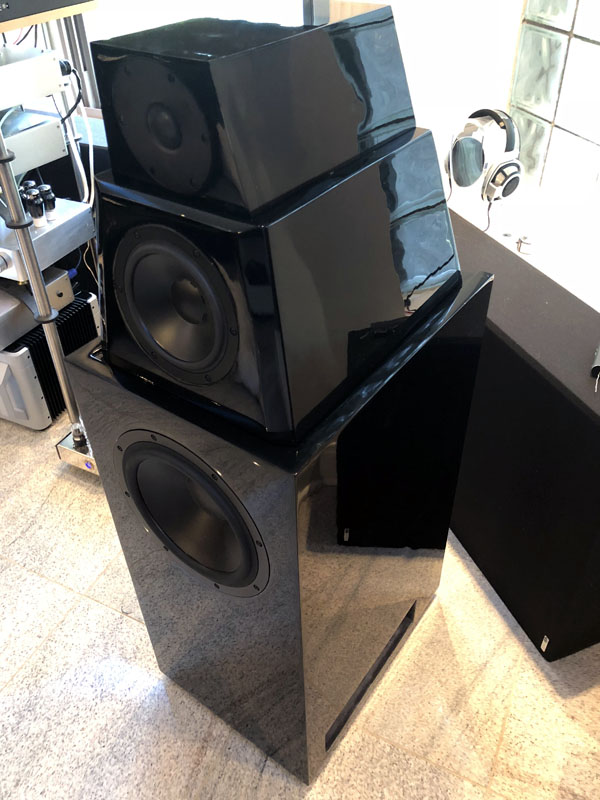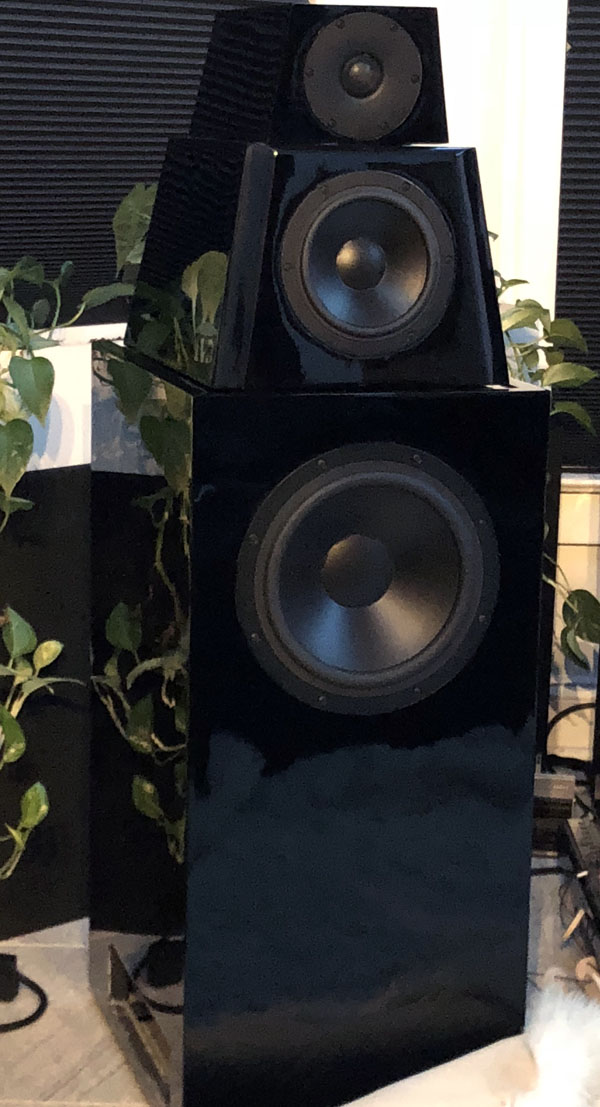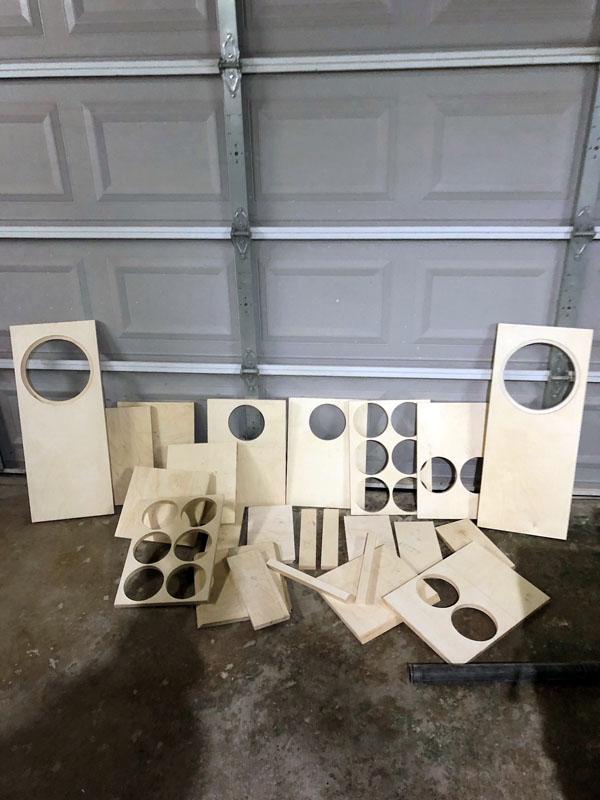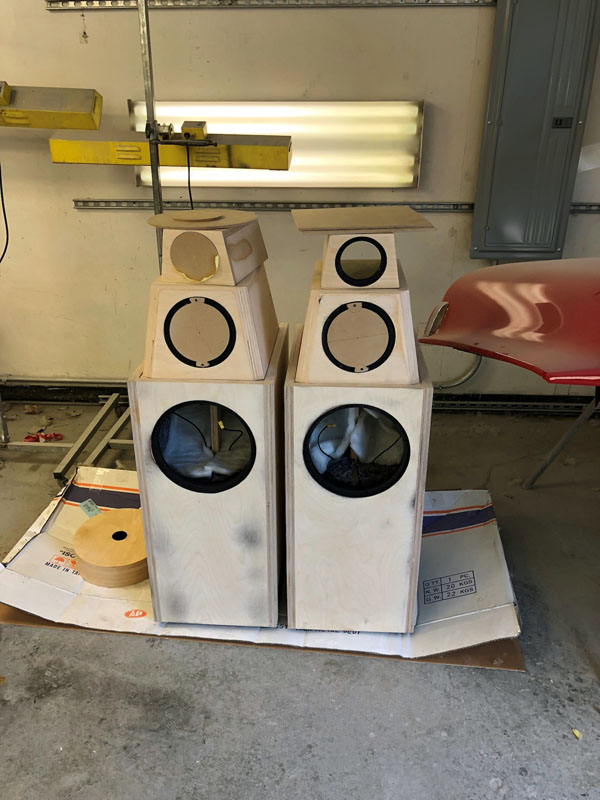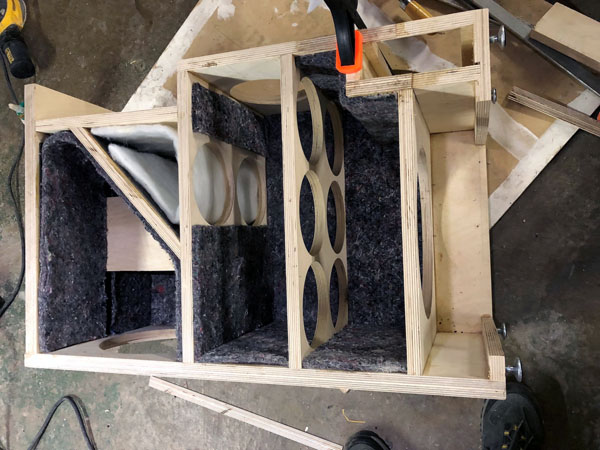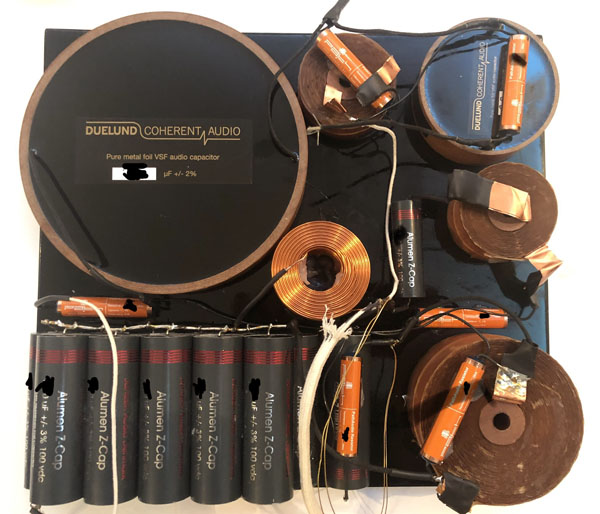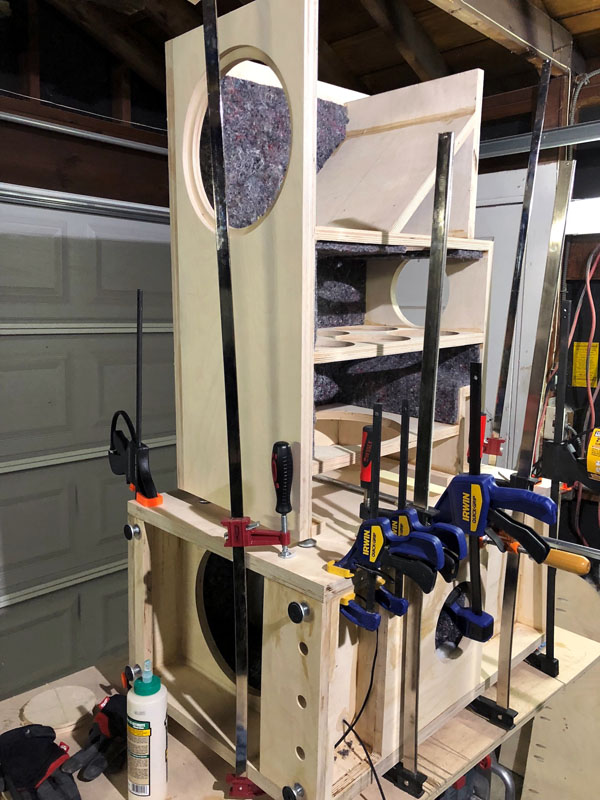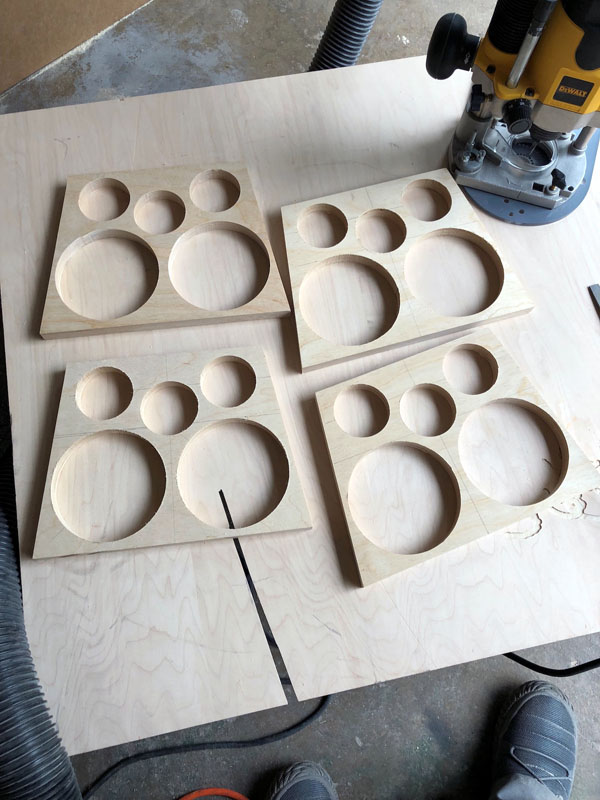ATS4-HE, built by Vassil, US
Copyright 2018 © Troels Gravesen
Hi Troels,
I built the ATS4-HE 6 months ago. Even my simplified version is the most
complex speaker construction I have built. It took quite a bit of
workshop time. I painted them in black piano gloss. It’s really hard to
make good photos. I used 1’’ thick Baltic birch. Both speakers together
are close to 300 lbs.
I was super excited to bring them home and connect them to my system for
the first time. I should know more about the break in process by now,
but when I first connected them I was extremely disappointed. Well, it
least in the first 15 minutes… they sounded awful. 15 minutes later the
magic happened. 6 months later they are fully broken in, and they exceed
my expectations on every level. I will not comment on the sound. The
only thing I would say is that if someone offers me $50K to
replace these speakers with commercially available speakers, I would
have a hard time picking another set of speakers. Maybe I will, but I
would have to think really hard.
I did some upgrades to them - custom Duelund CAST Tinned Copper caps
(ridiculously expensive) for the tweeter, Alumen-Z Caps everywhere else,
Path Audio resistors, Silver wire, fancy footers, good power cords for
the Hypex, etc. Every single one of these upgrades brought them a step
closer to live music. You have mentioned the importance of the quality
of the caps used in the signal path of the cross-over many times on your
website. I won’t repeat that, but will say that I agree 100%. Caps make
a huge difference in speakers like these. Resistors in the signal path
and wire matter too.
What surprised me was the effect of different feet. You did not think
they mattered much. And maybe they don’t in your room. But they have
quite significant effect in my room, arguably as big or even bigger than
replacing the capacitors. I started with the same M10 furniture feet you
use that I bought from a Praktiker store when I was in Europe. Then I
moved to
Herbie's Audio Lab Giant Threaded Stud Glider. They were a small
improvement but not much. Then I tried the IsoAcoustics Gaia. The Gaia’s
worked amazingly good, and I returned the Herbie’s. I am testing
ridiculously expensive Stillpoints Ultra 6 now, and they changed the
sound in an amazing way. My room is different than yours, but I
encourage people who build these speakers to try different isolation
devices.
Thank you again for sharing your amazing designs with us.
-Vassil
